There’s Something About Mariolli Folio F17r
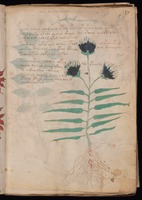 If you look at Folio F17r, it’s laid out like many of the other plant pages. There’s a colored plant, a block of text that flows around the plant, and a marginal note at the top. If it weren’t for the marginal note, the page would probably not attract much attention.
If you look at Folio F17r, it’s laid out like many of the other plant pages. There’s a colored plant, a block of text that flows around the plant, and a marginal note at the top. If it weren’t for the marginal note, the page would probably not attract much attention.
By itself, the marginal note isn’t especially unusual. Notes are found elsewhere, in the same apparent handwriting, but… there’s something about the text that is different and some incongruities in the marginal note worth exploring, as well.
Normally I would describe the text first, and then talk about the marginal note, but I’m doing it it the other way around because there’s more than one mystery on this page and one may help illuminate the other.
Mallior Allor?
When I’m investigating marginal notes, I try not to look at other people’s interpretations until I’m fairly sure of what it looks like to me and what I think it might mean. Then I begin to wonder if others have come to the same conclusion and I start scouting around. In this case, my idea differed from most (perhaps all) of the others, at least in part.
This is what the note looks like after I adjusted it in Photoshop to try to make it clearer:
 I confess I didn’t look at other analyses for very long, but this is what I discovered about other researchers’ interpretations…
I confess I didn’t look at other analyses for very long, but this is what I discovered about other researchers’ interpretations…
- Some consider the note unreadable.
- Some say it’s in cipher text.
- Some have suggested it is connected to Mattioli or Matthiolaus.
- René Zandbergen, in 1999, suggested mallior adlor lucz(m) her vnllomnis olio**
- Some say it’s Latin
I quickly stopped looking at other theories. I can’t see anything that evokes Mattioli or Matthiolaus in this text. I don’t think it’s cypher text, at least not the first part. Zandbergen’s suggestion makes more sense than any of the others, but I have some ideas that differ somewhat.
The Handwriting Style
First, some background. The margin note is in the same style of script used on the last page and some of the other marginal notes. This style of script emerged in the late 1300s and was just about gone by the late 1500s due to the invention of printing presses. Just as Carolingian had its day, this form of Germanic text, which was particularly prevalent in southeast Germany in the early 1400s, declined and died. During its height, it was mainly used for Latin and German religious texts and chronicles, although a slight variant was also used in certain monasteries in England and another variant in northeastern France.
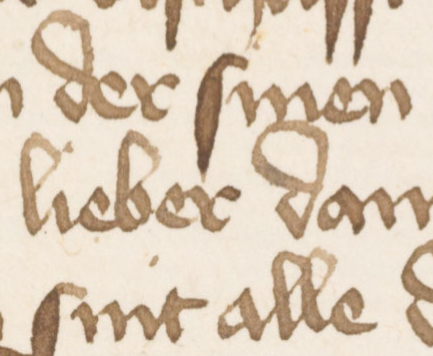 I mentioned in a previous article that part of the reason this form of script became popular was because there was a businessman in southern Germany running a manuscript studio (see example right) who earned extra cash by teaching handwriting to children (and probably anyone else who was willing to pay). This style of script was also shared in ecclesiastical settings in the St. Gall area.
I mentioned in a previous article that part of the reason this form of script became popular was because there was a businessman in southern Germany running a manuscript studio (see example right) who earned extra cash by teaching handwriting to children (and probably anyone else who was willing to pay). This style of script was also shared in ecclesiastical settings in the St. Gall area.
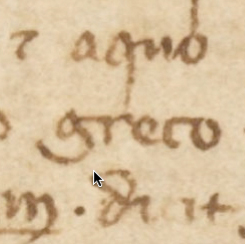 I tried to trace the earliest example of this style of writing and I’m not sure I have the earliest, but there is a possibility it originated in Naples or that someone from Germany visited Naples and brought it back in the 14th century, or may have learned the script in Germany, then traveled to Naples before writing the manuscript. Naples was a Lombardic kingdom until the 8th century but it’s probably Charles III or Ladislavs I who was King of Naples at the time this document was created.
I tried to trace the earliest example of this style of writing and I’m not sure I have the earliest, but there is a possibility it originated in Naples or that someone from Germany visited Naples and brought it back in the 14th century, or may have learned the script in Germany, then traveled to Naples before writing the manuscript. Naples was a Lombardic kingdom until the 8th century but it’s probably Charles III or Ladislavs I who was King of Naples at the time this document was created.
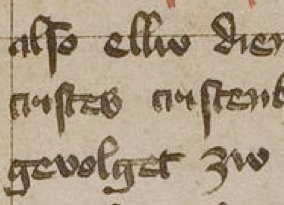 The example to the right originated in the early 15th century, about a decade before the one from the German workshop. It’s a heavier hand (a wider quill) than the spindly writing of the VMS margin-writer, but it’s the same style of writing and differs quite noticeably from most mid- and southern Italian writing of the time.
The example to the right originated in the early 15th century, about a decade before the one from the German workshop. It’s a heavier hand (a wider quill) than the spindly writing of the VMS margin-writer, but it’s the same style of writing and differs quite noticeably from most mid- and southern Italian writing of the time.
So, it appears that the margin notes are Germanic. Combine this with the sprinkling of Germanic words and it’s hard not to posit a Germanic influence on the handwriting style.
Most Lombardic scribes at the time wrote in both Latin and German and the marginal-notes writer is no exception. The last page includes both Latinesque and some almost-discernible Germanic words. The smaller marginal notes on other pages are a mixture of German and Latin with Latin scribal abbreviations and I’m somewhat sure that the marginal notes on this page are the same.
Don’t Keep us in Suspense… What Does it Say?
I’m fairly sure the note at the top is polyglot, just as I’m somewhat sure the text on the last page is polyglot. That’s not to say it was polyglot at the time. German was infused with Frankish words, Norman languages included a mixture of German, French, and old Norse, old Flemish existed somewhere between Latin, French, and Dutch, and most educated people knew Latin. Germanic script typically used a subset of Latin scribal abbreviations.
To start, I don’t think that first loopy letter is an “o” as has been suggested by many people. I think it’s an “e” mainly because many scribes wrote the letter “e” this way with hardly any tick mark to distinguish it from a “c”. Note how it slants more than an “o” and it doesn’t close all the way. The last letter of the first word is “r” as is the last letter of the next word. The “r” shapes are standard Germanic script of the time.
Here is my current guess at what it says. The “a” is messy, the second “e” or “o” is up for debate, but the other letters are discernible:
buy cheap generic cytotec online canada pharmacy no prescription mallier aller lucorem hov vi[ ]lameno ?? o? no/uo ?? olono?? (I cannot make out the end of it where it fades.)
Notice I expanded the Latin lucorum. The line above the cz means letters are left out—this was a common way to abbreviate a word. It can also be abbreviated with a -rum symbol that looks a bit like an embellished “4”. See my previous article about Latin abbreviations.
It would mean nothing to most people, even to many Europeans, but to a Norman, it could be understood as “to paint” in a mixture of Scandinavian with French pronunciation (even if it’s not French grammatical structure). Most languages use some form of the word “paint” (to mean coloring in something) but in German, it can be malen and in Norse, it’s “male” (it’s well to remember that Normandy derives from “Nor maend” (Men of the North, Norse men). Mallier could be a “verbized” form of “to paint”.
The next word aller or allor would be understood by most northern German or Scandinavians of the time as “all [of the]”. In Latin lucorem hov would refer to these things as green. I’m not absolutely sure it’s “hov” as the last letter is badly obscured but it might be.
Is it reasonable to believe that the marginal text could be instructions? I think it’s possible, given that there are annotations elsewhere in the same style of writing that could be interpreted that way and are added in a manner consistent with other herbal manuscripts. Consider that the “g” in the leaf of Plant 1v, the “por” (purple?) on the petals of the viola, and the “rot” on the stem of Plant 4r might be painting instructions, as well.
I am guessing that the statement could be an instruction as in, “paint all these green” except that the word after hov is probably part of the statement as in, “paint all these ___[leaves? plants? a shade of green?]___ green “. Unfortunately, I cannot make out the next word but it has a peculiarity that needs to be mentioned in the context of the whole page.
Is That a Slip of the Pen or Something Else?
The first two letters of the fading word look like vi but the next doesn’t appear to match any known Latin/Germanic character. Maybe it was a slip of the pen and was meant to be something like rt, but it keeps teasing me into thinking it’s a mini-gallows character. What follows after these shapes is difficult to discern, maybe -lamino or something like that but I haven’t succeeded in making it out.
 But getting back to that possible gallows character. I rejected the idea several times, because gallows characters are tall. It’s hard to hang someone from the height of a footstool so it makes no sense to interpret it as a gallows character, does it?
But getting back to that possible gallows character. I rejected the idea several times, because gallows characters are tall. It’s hard to hang someone from the height of a footstool so it makes no sense to interpret it as a gallows character, does it?
Remember I mentioned at the beginning of this article that there’s something odd about this page? Well guess what.. when I tired of staring at the faded letters, my eye drifted down the page and landed on, I couldn’t believe it, a tiny gallows character. Right there on the same page, on line seven! How improbable is that?
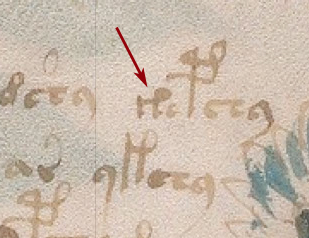 It’s very small, able to shelter under the arm of a full-sized gallows character and yet, despite its diminutive size, even has a tiny tick mark on the bottom foot that is characteristic of this symbol.
It’s very small, able to shelter under the arm of a full-sized gallows character and yet, despite its diminutive size, even has a tiny tick mark on the bottom foot that is characteristic of this symbol.
It’s hard to describe how surprised I was. As implausible as it seemed, at first, maybe there is a gallows character buried in the marginal note, just as there are VMS characters mixed in with Latin and German on the last page.
http://mountaintopcampground.com/new-reservation-system/ Summary
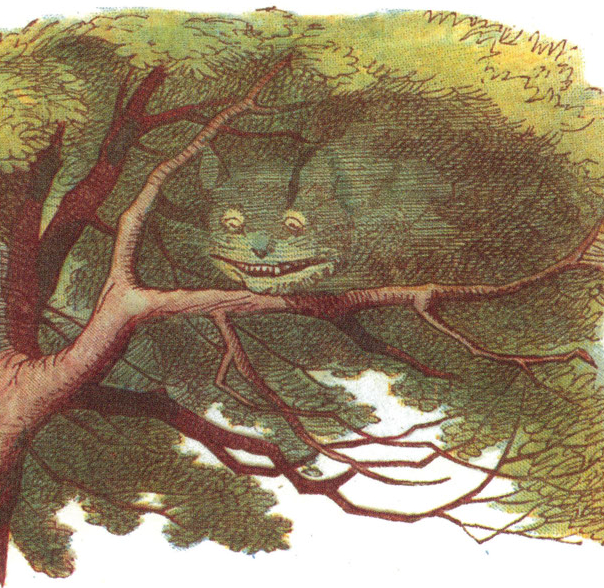 There’s more to say about this page, but I’ll do that in another article. For now, I’m throwing out an alternate suggestion for the marginal text that differs from what I’ve seen so far in the hopes of furthering the discussion about what it might mean.
There’s more to say about this page, but I’ll do that in another article. For now, I’m throwing out an alternate suggestion for the marginal text that differs from what I’ve seen so far in the hopes of furthering the discussion about what it might mean.
I wish I could see the Cheshire-cat text through a microscope—like everything else Voynichese, it’s a terrible tease.
J.K. Petersen
© Copyright 2016 J.K. Petersen, All Rights Reserved


Just a few side notes:
I can’t remember if my reading from 1999 was my own or someone else’s, but I have no experience or training in reading old handwriting, so to be taken with that in mind.
The reference to Mattioli comes from one of Robert S. Brumbaugh’s papers.
Nick Pelling first noted that at the unreadable end of this line, under UV illumination, a word in the Voynich script appears. I can confirm that this is correct, from when I also saw it under UV light in 2009. This is at the location where you transcribed: o? no/uo?
Thank you for that information, René.
It’s a significant detail in that it means the Germanic-style text (a form of Gothic cursive) and “Voynichese” are intermingled in at least two places in the manuscript (f17r and the last page).
Which strengthens the link between the two but still doesn’t clear up many of the hovering questions. Was the Germanic writer a contemporary of the VMS writer (the ink and writing style suggest this may be so)? A collaborator? A tutor? Or did the marginalia writer also author the main text?
What was the sequence of events? There are numerous signs that the plants were drawn before the main text was added, but did the marginalia precede or follow it? Was the Voynichese added to the Gothic marginalia by a different writer or did the marginalia writer use (or mimic) Voynichese when it suited?
Thanks! I agree that there are several remaining uncertainties.
One could add a third ‘marginal’ piece of writing and drawing, namely on f66r, which certainly has writing in the Voynich script, and also in the latin alphabet, which could be German again. One question is if all three should be considered together. Do the drawings belong with the writing?
In a very suggestive presentation in Villa Mondragone in 2012, the reading ‘poxleber’ on f116v was made plausible, while other proposed readings of the text are more doubtful. The appearance of an animal very similar to the Aries ‘goat’ in the left margin, and the reference to geis(s)mi(l)ch in the last line there, suggest they all belong together. Was the reclining person drawn by the same hand as the one on f66r?
Then: why do the ‘ei’ in ‘geis’ and the a’s in ‘car’ on f116v and in ‘mallier’ look the same? Or do they?
Yes, I saw the Voynichese letters using a UV blacklamp: they’re definitely there, no need to speculate or wonder (it’s all in Curse 2006, as I’m sure you know). It’s just a shame that the Austrian ORF documentary people never got around to releasing any of their UV photographs (as they intimated they would, as I recall).
Also: in my opinion, the whole “poxleber” reading of f116v is both nonsensical and unhelpful, along with “michiton”, “anchiton” and the rest. All that happened is this: once the original letters had faded badly (look at the “Maria” word on the right), someone valiantly tried to correct them by hand them as best they could (not realising that in centuries to come we would have superhuman technology to do the same). Which has left us in the position that it will now take a lot of technological cunning to try to undo their well meaning emendations: imaginative linguisticry will likely get us nowhere.